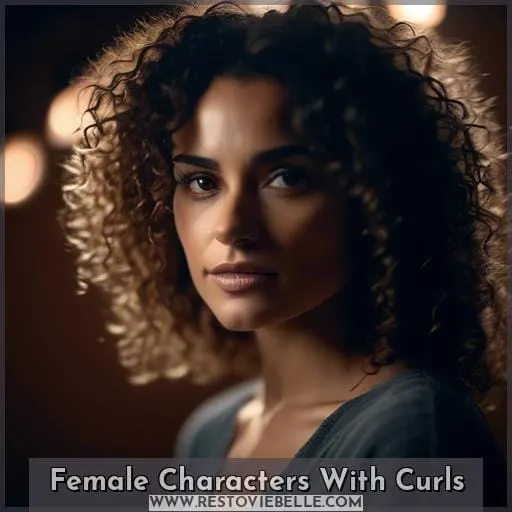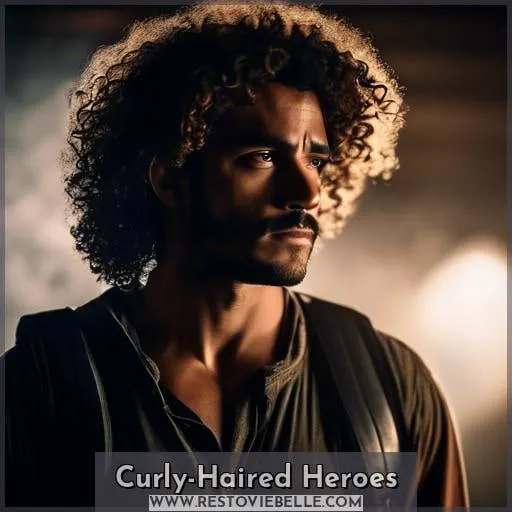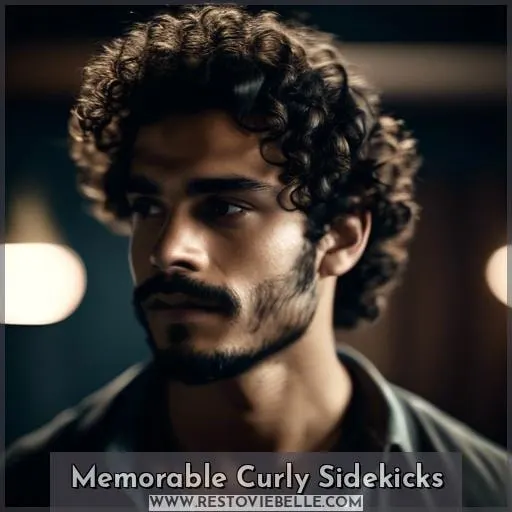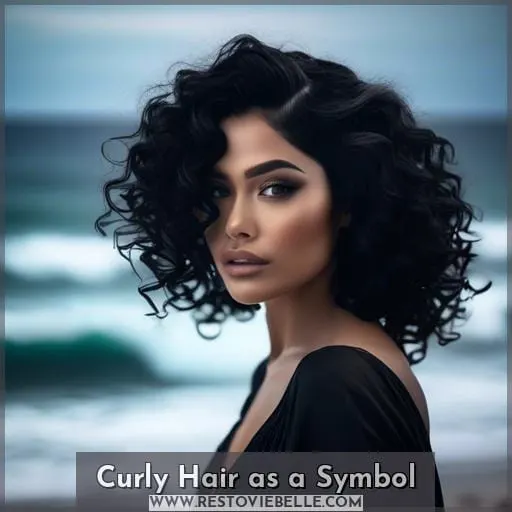This site is supported by our readers. We may earn a commission, at no cost to you, if you purchase through links.
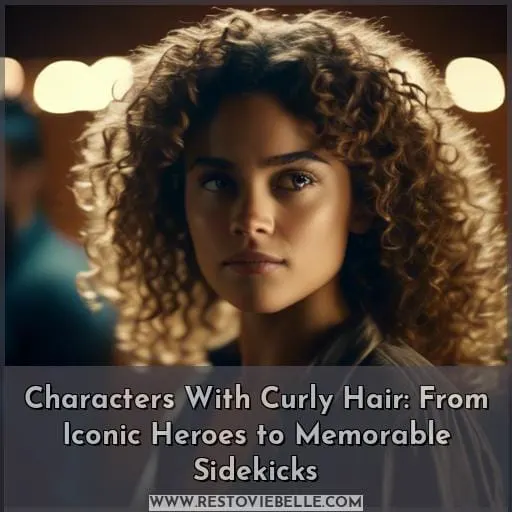 Imagine this: You’re flipping through your favorite show and there it is, a character that looks just like you, curls and all. It’s a moment of connection, a nod to the diversity that makes our world so vibrant.
Imagine this: You’re flipping through your favorite show and there it is, a character that looks just like you, curls and all. It’s a moment of connection, a nod to the diversity that makes our world so vibrant.
Characters with curly hair are more than just a style choice; they’re a celebration of individuality and culture. From the fiery spirals of Merida in Brave to the tight coils of Mirabel in Encanto, these characters bring representation to the screen, inspiring those with similar locks.
Dive into the world of iconic heroes and memorable sidekicks, all sporting that unique, curly flair.
Table Of Contents
- Key Takeaways
- Iconic Curly-Haired Characters
- Female Characters With Curls
- Curly-Haired Heroes
- Memorable Curly Sidekicks
- Curly Hair as a Symbol
- Frequently Asked Questions (FAQs)
- How do cultural perceptions of curly hair vary globally?
- What are the scientific reasons behind different curl patterns and textures?
- How has the representation of curly hair in media evolved over the last century?
- What challenges do individuals with curly hair face in the professional world?
- How do hair care practices and products for curly hair differ from those for straight hair?
- Conclusion
Key Takeaways
- Curly hair in characters often symbolizes a unique identity and self-expression, reflecting the cultural significance of embracing natural hair textures and celebrating diversity in human beauty.
- The evolution of curly hair representation in media, from a stigmatized trait to a celebrated one, mirrors broader societal changes towards diversity and inclusion, with curly textures now portrayed more positively.
- Individuals with curly hair in professional settings may face biases and pressure to conform to straight-haired norms, which can impact career opportunities and reflect ongoing struggles with societal beauty standards.
- The scientific basis for different curl patterns and textures is rooted in the structure of hair follicles and genetics, with oval follicles leading to curly hair and round ones to straight hair, highlighting the fascinating genetic diversity of hair texture.
Iconic Curly-Haired Characters
When you think of characters with curly hair, Linguini from Ratatouille and Ginger Foutley from As Told by Ginger might spring to mind.
These characters showcase the diversity and charm that curly locks can bring to the screen. They’re a testament to the fact that you don’t need straight hair to be a star; curls can be just as iconic and memorable.
Linguini From Ratatouille
In the heart of Paris, you’ll find Linguini, the underdog of Ratatouille, whose curly mop is as untamed as his initial kitchen disasters. His curls embody the chaos of his early culinary attempts, yet as Linguini’s insecurity gives way to determination, his growth is palpable.
With Remy’s guidance, he transforms from a clumsy novice to a chef with promise, his relationship with the little chef shaping Linguini’s future. His journey resonates deeply, as characters with curly hair like Linguini often reflect the unpredictable twists of life, making them iconic heroes or memorable sidekicks in our favorite tales.
Ginger Foutley From as Told by Ginger
Just as Linguini’s journey in Ratatouille showcases the transformative power of embracing one’s unique talents, Ginger Foutley’s story in As Told by Ginger offers a heartfelt exploration of navigating adolescence with curly red hair.
Ginger’s insecurities and the stereotypes she faces about curly hair reflect broader cultural narratives around red hair symbolism and the role of hair as identity. Her journey toward social acceptance mirrors the struggles and triumphs of many, highlighting the importance of self-acceptance and the rejection of limiting stereotypes.
Through Ginger’s experiences, viewers are reminded of the rich diversity and complexity of individual identity, encouraging a deeper understanding and appreciation of one’s unique traits.
Female Characters With Curls
You’ll find that characters like Merida from Brave and Mirabel from Encanto are more than just animated figures; they’re beacons of representation for those with curls.
As you watch Merida’s fiery locks embody her fierce independence or see Mirabel’s curls reflect her vibrant spirit, you’re reminded of the beauty and strength in diversity.
Their textured tresses are a celebration of identity, challenging the norms and inspiring you to embrace every coil and kink of your own hair.
Merida of DunBroch From Brave
Merida of DunBroch, the fiery protagonist from Brave, embodies the spirit of independence and adventure. Her unruly curls mirror her untamed nature, a visual testament to her fierce individuality.
As a skilled archer, she defies the traditional expectations of princesshood, choosing to forge her own path rather than conform to the pressures of royal duty. Her relationship with her mother, Queen Elinor, is central to the narrative, exploring the complexities of familial bonds and the struggle for self-determination within the confines of tradition.
Merida’s impact on the Disney princess archetype is profound, offering a role model who values personal growth and courage over conformity, resonating with audiences seeking characters who break the mold and inspire innovation and a sense of belonging.
Mirabel Madrigal From Encanto
Continuing from the fiery spirit of Merida, you’ll find Mirabel Madrigal’s journey in Encanto equally stirring.
Unlike her magically gifted family, Mirabel’s lack of powers sets her apart, yet it’s her ordinary nature that becomes extraordinary. Her role in the story isn’t just about personal growth; it’s a deep dive into family dynamics, where her character development becomes a beacon for change.
Mirabel’s normalcy, imbued with magical qualities, symbolizes the film’s heart—embracing one’s true self can be the most powerful magic of all. Her quest mirrors the complexities of real families, much like the rugrats of our own lives, and the enchantment of finding one’s place, akin to the quirky charm of Hotel Transylvania.
Curly-Haired Heroes
In the vibrant world of animation and television, characters like Otto and Reggie Rocket from Rocket Power stand out not just for their adventurous spirits but also for their distinctive curly hair.
These characters serve as fantastic examples of how diverse hair textures, particularly curls, can be celebrated and represented in media.
Their presence on screen is a small yet significant step towards embracing and showcasing the beauty of natural hair, encouraging viewers, especially the younger audience, to appreciate and love their unique curls.
Otto Rocket From Rocket Power
Otto Rocket’s hair volume is as much a part of his identity as his skateboarding skills.
In Rocket Power, you’ll find Otto’s curls defy gravity, much like his daring stunts on the half-pipe.
His friendships are tight-knit, reflecting the show’s focus on camaraderie and teamwork.
Otto’s family dynamics, especially with his sister Reggie, add depth to his character, showcasing a realistic sibling relationship amidst their extreme sports adventures.
As Otto grows, his character development is evident; he learns valuable lessons about humility and teamwork, which are as important as his athletic pursuits.
Reggie Rocket From Rocket Power
Reggie Rocket, a standout character from Rocket Power, breaks away from regressive stereotypes with her dynamic personality and passion for extreme sports.
As the only girl in her group, she champions multicultural representation and embodies the natural hair movement, showcasing her curls with pride.
Reggie’s character subtly draws on anime influence, adding depth to her portrayal and challenging traditional narratives.
Her presence in the show not only highlights hair as a crucial aspect of identity but also celebrates diversity and inclusion, making her a beacon for viewers seeking characters that reflect their own experiences and aspirations.
Memorable Curly Sidekicks
In the vibrant tapestry of animated and cartoon sidekicks, characters like Carl Wheezer from Jimmy Neutron and Gerald Johanssen from Hey Arnold stand out not just for their memorable adventures but also for their distinctive curly locks.
These characters bring diversity and depth to their respective worlds, showcasing that everyone, regardless of their hair texture or role in the story, can be a hero in their own right.
Their curly hair adds to their unique identity, making them unforgettable and relatable to audiences who see parts of themselves reflected on the screen.
Carl Wheezer From Jimmy Neutron
Meet Carl Wheezer, Jimmy Neutron’s neurotic yet endearing sidekick, known for his iconic curls and unique fashion sense.
Carl’s insecurities often surface, yet his unwavering loyalty to Jimmy showcases the depth of their friendship.
Despite his fears, Carl plays a crucial role in the group, bringing humor and heart to their adventures.
His hobbies, including a peculiar love for llamas, add layers to his character, making him unforgettable in the realm of animated sidekicks.
Gerald Johanssen From Hey Arnold
Following Carl Wheezer’s quirky charm, let’s dive into another unforgettable curly sidekick, Gerald Johanssen from Hey Arnold!
Gerald’s influence stretches far beyond his iconic hairstyle, challenging curly hair stereotypes with his cool demeanor and significant character development. His curls aren’t just a trait; they’re a testament to his personality, embodying the diversity and complexity of his character.
Gerald’s journey in the series showcases how hair can symbolize identity and growth, making his design impactful. Through Gerald, we see the cultural significance of embracing natural curls, breaking away from the notion that curly hair is unruly or less desirable.
Curly Hair as a Symbol
In the vibrant tapestry of characters across media, those with curly hair often carry a deeper significance, embodying cultural heritage and spiritual connections.
Disney’s Encanto beautifully showcases this, celebrating the diversity of curls and their representation, which resonates with many for its authenticity and inclusivity.
Beyond aesthetics, curls in various cultures symbolize creativity, freedom, and a unique perspective on life, highlighting the importance of embracing and understanding the cultural and spiritual narratives intertwined with curly hair.
Representation in Encanto
Continuing from the celebration of curly sidekicks, let’s delve into the vibrant world of Encanto, where curls aren’t just a style but a symbol of diversity and cultural pride.
The film’s representation of various hair textures, from Mirabel’s bouncy curls to Antonio’s tight ringlets, showcases an intersectionality that resonates deeply with audiences. It’s a visual feast of acceptance, where every coil and kink on screen amplifies the message of inclusivity.
Encanto not only entertains but also mirrors the rich tapestry of our diverse societies, encouraging you to embrace your unique identity.
Cultural Significance of Curls
Curly hair isn’t just a style; it’s a profound part of who you are. It’s a canvas for self-expression and a testament to diversity. As you navigate the world, your curls are a bold statement of identity and acceptance.
They’re not just twists and turns of keratin; they’re intricate parts of your personal narrative, reflecting a rich cultural tapestry.
- Curls and identity: They’re an emblem of your unique self, a signature that’s as individual as a fingerprint.
- Curls and acceptance: Embracing your natural coils is a journey towards self-love, defying outdated beauty norms.
- Curls and diversity: Your spirals celebrate the variety of human beauty, challenging the one-size-fits-all approach to appearance.
- Curls and hair care: They require dedication, symbolizing the care you invest in yourself, which is as much about nourishment as it’s about aesthetics.
- Curls and self-expression: Each curl is a choice to stand out, to be seen, and to be heard in all your authentic glory.
Frequently Asked Questions (FAQs)
How do cultural perceptions of curly hair vary globally?
Cultural perceptions of curly hair are diverse. In some societies, it’s celebrated, while in others, it’s seen as unruly or unprofessional.
These attitudes are deeply rooted in history, media, and racial biases.
What are the scientific reasons behind different curl patterns and textures?
You might wonder why your curls fall the way they do.
It’s fascinating: your hair’s shape is set by the follicles. Genes dictate this, with curly hair stemming from oval follicles and straight from round ones.
How has the representation of curly hair in media evolved over the last century?
Over the last century, curly hair’s representation in media has shifted from a stigmatized trait to a celebrated aspect of identity.
Initially marginalized, curly textures have gained visibility and appreciation, reflecting broader societal changes towards diversity and inclusion.
What challenges do individuals with curly hair face in the professional world?
You might face biases at work where curly hair is often unfairly seen as less professional.
How do hair care practices and products for curly hair differ from those for straight hair?
Curly hair thrives with moisture-rich, sulfate-free shampoos and deep conditioners. Unlike straight hair, which may prefer lighter products. You’ll avoid brushes, embracing wide-tooth combs and finger detangling instead to protect your curls’ integrity and reduce breakage.
Conclusion
Like a tapestry woven with diverse threads, characters with curly hair add rich texture to the fabric of storytelling.
You’ve seen them triumph and charm, their curls a symbol of the vibrant diversity we cherish.
They’re not just figures on a screen; they’re mirrors reflecting the unique beauty in us all.
Embrace these curly-haired icons and sidekicks, for they celebrate the spirals and coils that make you, and the world, wonderfully unique.

